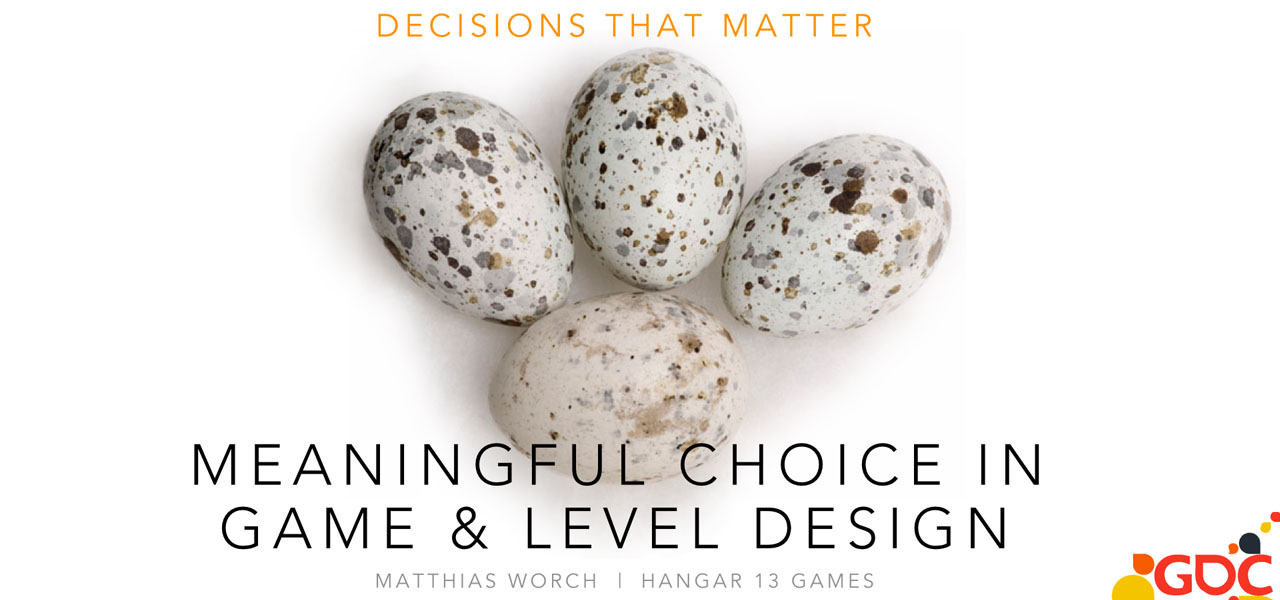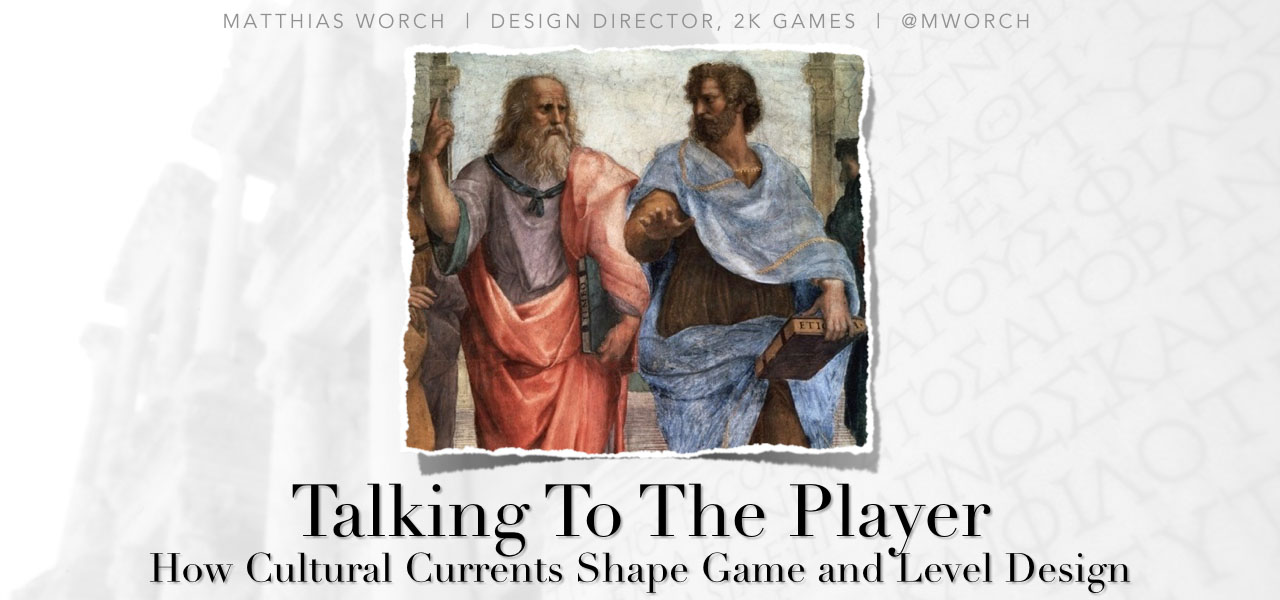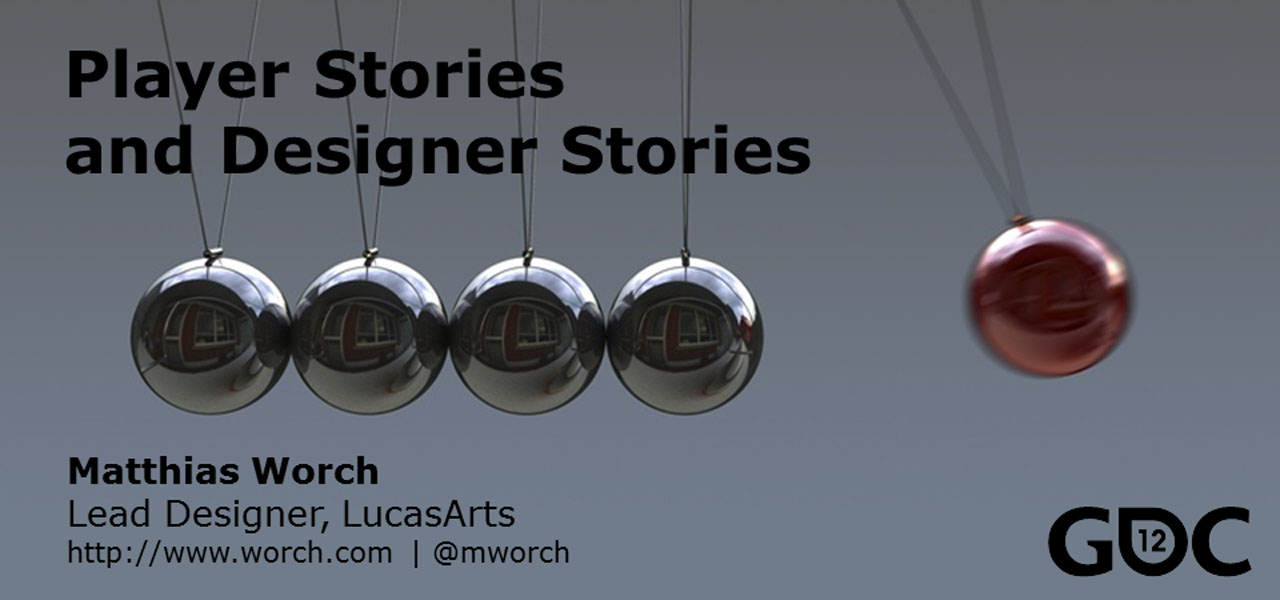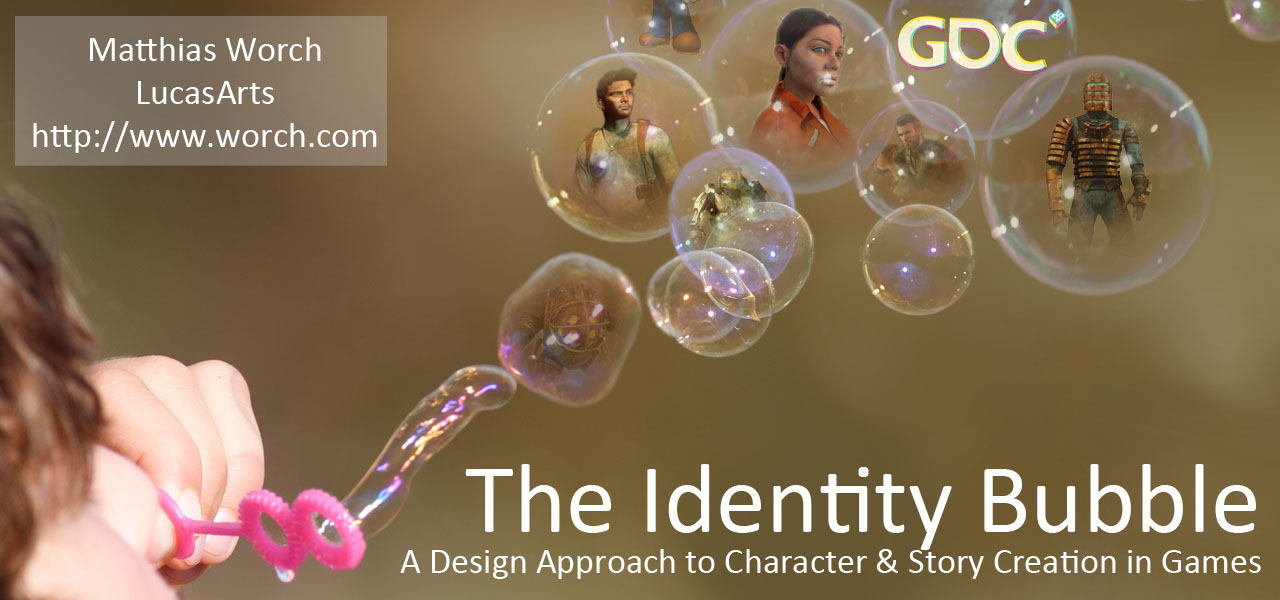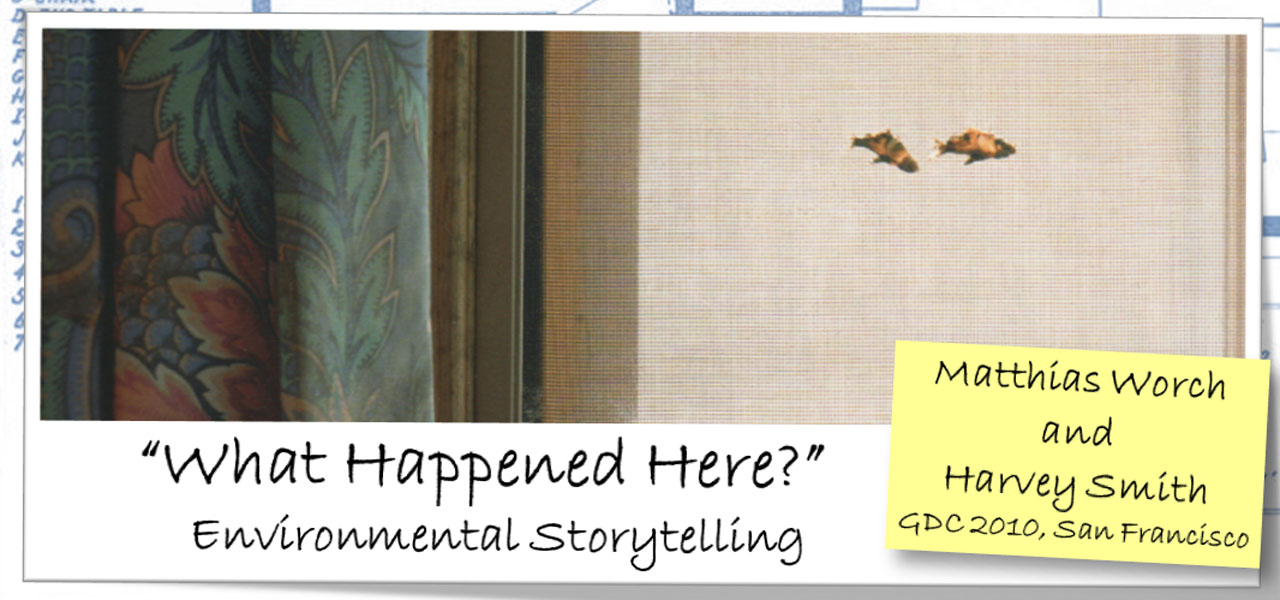As a direct follow-up to my 2012 talk “Player Stories and Designer Stories”, this GDC lecture delves deeply into the oft-repeated, but rarely explored game design concept of “interesting decisions”. Meaningful choice is the foundation of good game design, but there is a surprising amount of ambiguity surrounding the topic. This lecture explores when decisions are meaningful to the brain, ties that reasoning into the biology and psychology of why decisions matter in real life (and why we play games as a result), and then uses Doom 2 combat as a case study for how Systemic Agency (a concept established in my 2012 talk) is created, which leads to interesting low-level gameplay.
GDC
GDC 2013: “Talking to the Player – How Cultural Currents Shape and Level Design”
My 2013 GDC lecture explores computer games’ place in the cultural landscape. As developers and players, we hear comparisons between movies and games all the time, and we are still heavily influenced by the way in which movies (and books) have shaped our expectations for storytelling, authorship, and even our very patterns of thinking. But it turns out that computer games are not a direct continuation of that media lineage, and that the era of authoritative entertainment that books and movies represent is presently being replaced by a new cultural age that is much more complex than the one that came before. My lecture extrapolates those findings into hands-on advice on everyday problems faced by level and narrative designers, and explains in detail how computer games are the perfect expression of our current cultural values; an age that is commonly referred to as Secondary Orality.
GDC 2012: “Player Stories and Designer Stories”
Games are inherently participatory. That interactive nature is the reason for why we play games, and it’s how computer games are powerfully different from all other media. But whose story does a game tell? That of the player, the game character, or the designer? The answer lies somewhere in the middle, and this lecture provides a review of how games create narrative by structuring designer and player stories through level design.
GDC 2011: “The Identity Bubble – A Design Approach to Character and Story Creation”
Who is the actor in a game? Is it the person holding the controller in the real world, or the player-character who moves through the game-world? The answer is Both, and the game designer must work carefully to keep the interests of these two consciousnesses aligned. This GDC talk looks at how we reconcile developer-defined and player-derived character identities. Games often feature strong pre-authored characters and story arcs, while trying to give the player the feeling of uninhibited agency. The practical techniques presented here show how to design stories that don’t simply provide a context for the players actions, but instead create impulses and motivations within the player that are in alignment with those of the avatar. Player and avatar float along in unison inside an identity bubble, working towards a common goal.
GDC 2010: “Introduction to Level Design”
This in an introductory look at the world of level design that I presented at the first Level Design in a Day tutorial at GDC 2010. It looks at what a level designer does and how she does it. The material is entry level, but I tried to provide a good overview of the disciplines. There is some overlap You with the level definitions that Harvey and I used in our “What Happened Here?” session.
If you’re interested, you can download the slides for this session here (PowerPoint 2007 .pptx, 4.5MB)
GDC 2010: “What Happened Here? – Environmental Storytelling”
This lecture, which I presented together with Harvey Smith at the GDC 2010, examines the game environment as a narrative device, with a focus on further involving the player in interpreting (or pulling) information, in opposition to traditional fictional exposition. Harvey and I provide an analysis of how and why some games in particular create higher levels of immersion and consistency, and we propose ways in which dynamic game systems can be used to expand upon these techniques. The lecture presents the techniques for environmental storytelling, the key to the creation of game spaces with an inherent sense of history; game spaces that invite the player’s mind to piece together implied events and to infer additional layers of depth and meaning. In addition to commonly-used environmental storytelling tools (such as props, scripted events, texturing, lighting and scene composition), we present ideas for using game systems to convey narrative through environmental reaction. Environmental storytelling engages the player as an active participant in narrative; game systems that reflect the player’s agency can do the same. The lecture will analyze existing cases and provide a framework for dynamic environmental storytelling in games.

